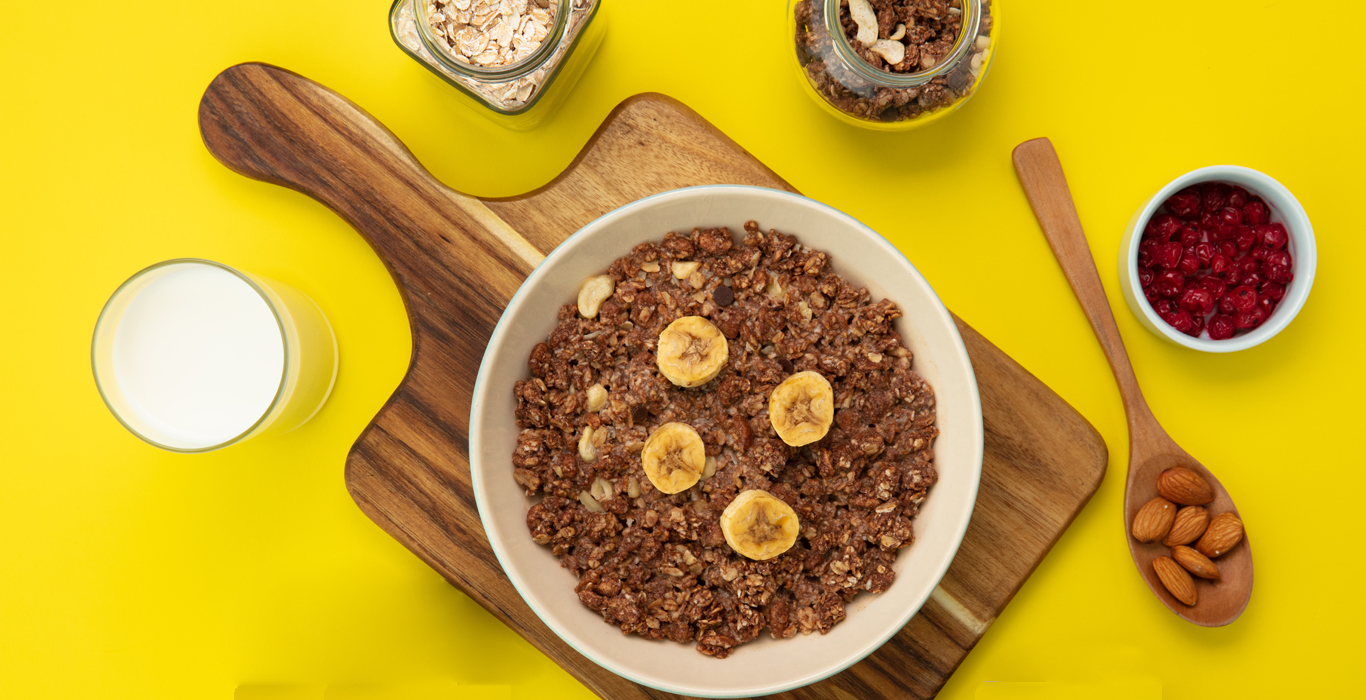Ragi flakes have gained immense popularity as a healthy breakfast option in recent times. Health-conscious people are increasingly including ragi flakes in their diet due to their versatility, ease of use and plenty of health benefits.
Ragi flakes are essential and rich in various essential nutrients like calcium and iron. Their high fiber content supports healthy digestion and helps maintain a healthy blood sugar level.
In addition to its nutritional benefits, ragi flakes also offer significant environmental benefits. Ragi is a drought-resistant crop and can grow in adverse weather conditions. Furthermore, it provides natural resistance to pests and requires less fertilizers for cultivation.
By including ragi flakes in your diet, you can not only support your well-being but can also contribute to a healthier planet.
What are the environmental benefits of ragi? Why is choosing ragi flakes good for the planet? Read on to find out more.
Environmental Benefits of Ragi Flakes
Low water requirement
Ragi is a sustainable crop and requires less water to grow. Research shows millet is a water-resistant crop choice and requires less water than traditional crops like wheat and rice. This low water requirement makes it an ideal crop for regions facing water scarcity and can help in dealing with food and water crises worldwide.
Drought Resistance
Ragi offers natural resistance to drought and can survive well in harsh weather conditions. Research shows that ragi can thrive at altitudes of 2,000 meters above sea level and requires an average temperature of 26-29°C for optimal growth. Its adaptability to various climates makes it a sustainable crop and helps in reducing food insecurity in at-risk areas.
Natural Resistance to Pests
Ragi can grow in less fertile soil and offer natural resistance to many pests and diseases. Research shows Ragi seeds can resist storage pests for up to 10 years, and can help in ensuring a reliable food supply even during crop failures. Less use of fertilizers not only leads to healthier soil but also reduces the negative impact of agrochemicals on human health as well.
Low Greenhouse Gas Emissions
The cultivation of ragi results in fewer greenhouse gas emissions compared to traditional crops like wheat or rice. Its low water requirement and minimal use of fertilizers reduce the energy input throughout its production process. Thus, they produce fewer emissions and have a smaller carbon footprint.
Promotes Biodiversity
Ragi cultivation helps preserve soil fertility and biodiversity. Ragi is well-suited for intercropping, which allows farmers to plant it alongside other crops, thus, it improves soil health and promotes beneficial insect populations. As a result, it helps in building a more resilient and diverse ecosystem.
Supports Small-Scale Farmers
Ragi is often grown by small-scale farmers, especially in developing countries like India and Africa. These farmers often use eco-friendly practices, such as crop rotation and organic fertilizers. This sustainable approach fosters traditional agriculture in the country and benefits both the environment and local communities.
Why Ragi Flakes are a Sustainable Breakfast Option?
Minimal Processing
Ragi flakes are made by soaking, steaming, and flattening ragi grains. This minimal processing helps retain the nutritional integrity of the grain while using far less energy compared to other heavily processed cereals. The simplicity of ragi flakes’ production makes it a healthier cereal option and also contributes to their lower environmental impact.
Nutritious and Filling
Ragi flakes are not only eco-friendly but also incredibly nutritious. Their high fiber content helps you stay full longer and helps in healthy weight management. Moreover, Ragi flakes can be used as a great cereal option for lactating and pregnant mothers and support their well-being.
Versatile in nature
Ragi flakes are extremely versatile and can easily fit into your daily routine. You enjoy them as a breakfast cereal, in smoothies, or can be used in various baking recipes. Furthermore, Ragi flakes are quick to prepare and offer increased convenience for busy individuals.
Conclusion
In conclusion, Ragi flakes are great for our health and environment. By incorporating ragi flakes into your diet you can take a small but significant step toward reducing your environmental impact and supporting a greener tomorrow.
If you are looking for high-quality Ragi flakes, then please check out Skyroot’s newly launched ragi flakes. These Ragi flakes are made with gluten-free ingredients and are high in fiber and protein. Moreover, they have a low GI and can offer great help in healthy weight management. Visit our website to know more.







